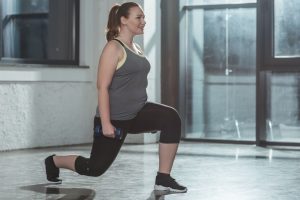Incorporating strength training into marathon training
Marathon training can be a challenging and demanding process. Incorporating strength training into your routine can have numerous benefits for your overall performance and health. Strength training can help improve running form, reduce the risk of injury, and increase endurance and overall strength. In this article, we will delve into the importance of strength training for marathon runners and provide tips for incorporating it into your training regimen.
Benefits of Strength Training for Marathon Runners
Strength training can have several benefits for marathon runners, including:
- Improved running form: Building strength in key muscle groups can help improve your running form, making you a more efficient and injury-resistant runner.
- Reduced risk of injury: Strength training can help prevent overuse injuries and improve overall stability, reducing the risk of injury during your marathon training and race.
- Increased endurance: Incorporating strength training into your routine can help improve your overall endurance, allowing you to run farther and faster.
- Better performance: By improving your running form, reducing injury risk, and increasing endurance, strength training can lead to improved overall performance in your marathon race.
How to Incorporate Strength Training into Your Marathon Training Regimen
Incorporating strength training into your marathon training regimen can seem overwhelming, but it doesn’t have to be. Here are some tips to help you get started:
- Start slow: If you’re new to strength training, start with a simple routine and gradually increase the intensity and frequency over time.
- Focus on key muscle groups: Focus on building strength in key muscle groups, such as the glutes, hips, and legs, to improve your running form and reduce the risk of injury.
- Incorporate variety: Incorporate a variety of strength training exercises into your routine to target different muscle groups and prevent boredom.
- Balance with rest and recovery: Be sure to balance your strength training with rest and recovery to avoid overtraining and injury.
Recommended Strength Training Exercises for Marathon Runners
 Some recommended strength training exercises for marathon runners include:
Some recommended strength training exercises for marathon runners include:
- Squats: Squats target the glutes, hips, and legs, improving your running form and reducing the risk of injury.
- Lunges: Lunges target the glutes and legs, building strength and stability for improved running performance.
- Deadlifts: Deadlifts target the lower back, hips, and legs, building strength and stability to improve your running form and reduce the risk of injury.
- Planks: Planks help improve core strength and stability, reducing the risk of injury and improving overall running form.
- Step-ups: Step-ups target the legs and hips, building strength and stability to improve your running performance.
Importance of Rest and Recovery in Strength Training for Marathon Runners
Rest and recovery are critical components of any strength training regimen, particularly for marathon runners. Overloading your muscles with too much strength training without adequate recovery can lead to overtraining and injury. To avoid this, be sure to balance your strength training with rest and recovery, and listen to your body to avoid overtraining. Additionally, make sure to maintain good nutrition and hydration to fuel your body throughout your training. Doing this will help you stay healthy and maximize the benefits of your strength training.
Importance of Progressive Overload in Strength Training for Marathon Runners
Progressive overload is a crucial principle in strength training . It involves gradually increasing the intensity and/or volume of your training over time. For marathon runners, this means gradually increasing the weight of your strength training exercises, the number of reps and sets, or the frequency of your training sessions.
Progressive overload is important because it helps to continually challenge your muscles, leading to improvements in strength, endurance, and overall performance. It also helps to prevent boredom and plateaus in your training progress.
When incorporating strength training into your marathon training regimen, it’s important to start slow and gradually increase the intensity and/or volume of your training over time. This will allow your muscles to adapt and prevent injury. It’s also important to listen to your body and adjust your training accordingly to avoid overtraining or injury.
In addition to progressive overload, it’s also important to incorporate variety into your strength training routine. This means changing up the exercises you do, the weights you use, and the order of your exercises from time to time. This will help prevent boredom and keep your muscles challenged and engaged.
Another key element is to recognize when you reach plateaus in your training progress and make adjustments accordingly. This may include changing up the exercises you’re doing, increasing or decreasing the weights you use, adjusting the number of reps and sets, adding in rest days, or increasing your overall intensity.
Conclusion:
Incorporating strength training into your marathon training regimen can have numerous benefits for your overall performance and health. By focusing on building strength in key muscle groups, incorporating a variety of exercises, and balancing with rest and recovery, you can improve your running form, reduce the risk of injury, and increase endurance and overall strength. With these tips, you’ll be well on your way to becoming a stronger, more efficient, and injury-resistant runner.
[wpchatai]


